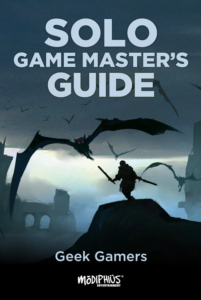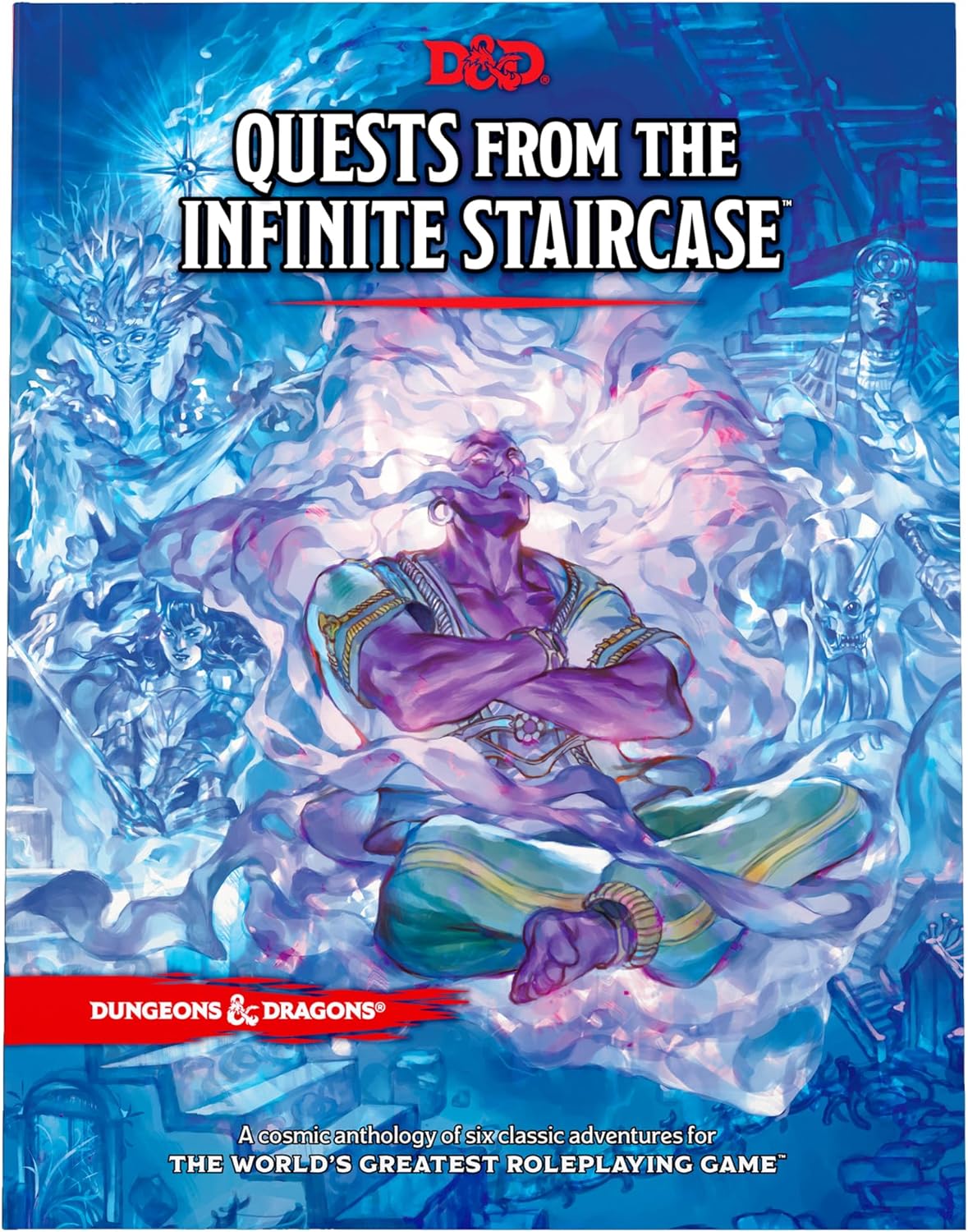
Solo gaming, that is, playing a wargame or an RPG by yourself, was rising in popularity before Covid had us all locked down and spending a lot more time by ourselves at home. Today, with games like Rangers of Shadow Deep, Crimson Heroes, and Ironsworn: Starforged, solo gaming is becoming a thing in its own right.
Which means it’s the perfect time for Modephius’ new book, Solo Game Master’s Guide. The author, who goes by the nom de plume Geek Gamers, is well known for discussing and demoing solo RPG games and techniques on their YouTube channel. Solo Game Master’s Guide is a collection of tips, tricks, and best practices, organized and laid out so the experienced solo gamer can find what they need quickly, and the beginner can be stepped through the process of running a solo game while helping them avoid common pitfalls.
Solo Game Master’s Guide is not, itself, an RPG. Rather, it’s about taking the RPG of your choice and modifying it so you can play by yourself, whether it’s a rules-lite thing has rules spread over a number of massive tomes.
The book is divided into three parts. Part One: Campaign Level: The Big Picture explains what solo RPGing is and the mindset of the successful solo GM. Part Two: At the Table: Rules and How to Use Them, discusses how to read a rule book with solo GMing in mind, gives step-by-step suggestions for how to start a campaign, and even goes over how to start playing before you’ve chosen a set of rules, and how to pick the rules set that best fits. It wraps up with using D&D 5e as an example of how to begin. Part Three: Tools of the Trade: Oracles, Dice and Random Tables, discusses how to use randomness to generate fun gameplay, how to avoid “the Yes/No dead end,” and how to use narrative trajectory as a structure for your gaming that can propel your campaign forward even when you feel stuck.

Finally, there’s nearly 50 pages of random tables and tools, with bits of advice for using them along the way, as well as techniques for altering rules to better fit solo gameplay. There are tables for generating character attitudes (whether PC or NPC), a set of tables to help you get things rolling even before you’ve picked the rules you want to use, a brief discussion of altering the rules to handle a small group of PCs (or even just one) when the rules assume you’ll be playing with a larger group (D&D, we’re very much looking at you), and a random table of evocative and idea-inspiring quotes from literary sources such as the works of M.R. James, Joseph Conrad, H.G. Wells, Jorge Luis Borges, Virginia Wolf, and, of course, H.P. Lovecraft. There’s a list of games that are well-suited to solo play and discussion of what makes them so. Finally, there’s a classic Appendix N, which includes books on plotting and narrative structure, books discussing architectural design and the literary meanings of spaces both wild and designed, and other books on playing RPGs solo.
If you’re already part of the solo RPG scene, you’ve almost certainly been looking forward to the publication of this book for a while. The tables and suggestions will be indispensable to the soloist, adding greater depth to people and places, and helping you drive your story via narrative rather than rules (which tend to run into dead ends or just stop because they assume a GM to provide all the connective tissue). If you’re just getting started in solo RPGing, or have never tried it before, you’ll find this book an excellent starting place, full of useful advice and practical how-to information. Talk to the RPG experts at your local Dragon’s Lair Comics and Fantasy® about adding the excellent Solo Game Master’s Guide to your library today.


